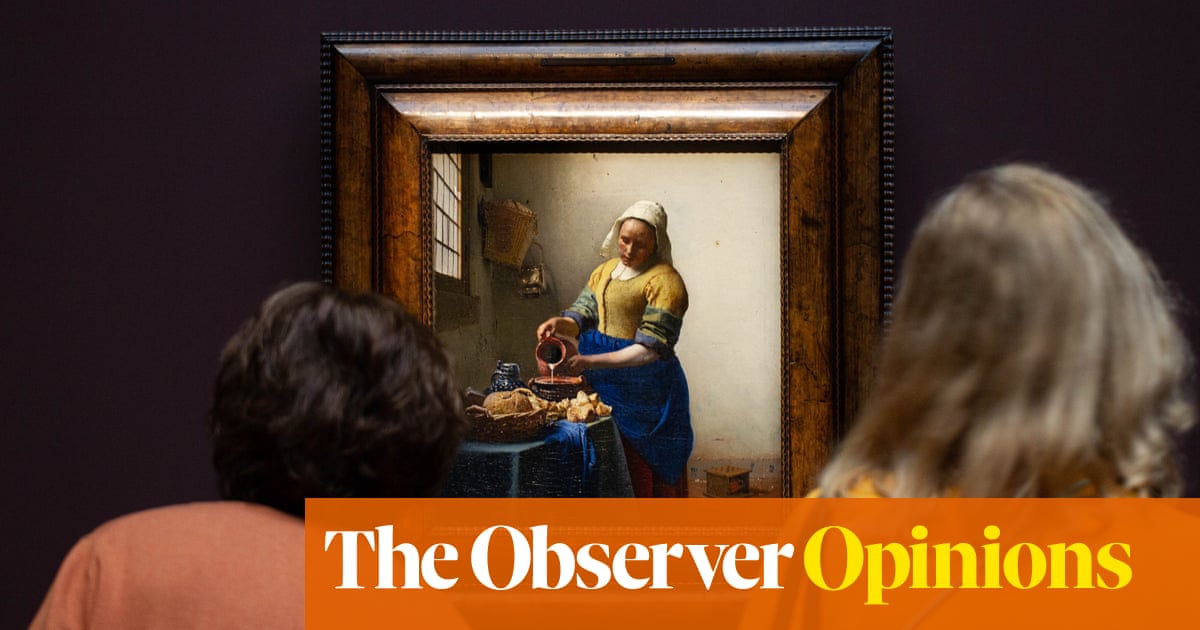
There is a scene in Marilynne Robinson’s novel Gilead in which the main character, John Ames, a pastor, walking to his church, comes across a young couple in the street. “The sun had come up brilliantly after a heavy rain, and the trees were glistening and very wet,” he recalls. The young man ahead of him “jumped up and caught hold of a branch, and a storm of luminous water came pouring down on the two of them, and they laughed and took off running, the girl sweeping water off her hair and her dress”. It was “a beautiful thing to see, like something from a myth”. In such moments, “it is easy to believe… that water was made primarily for blessing, and only secondarily for growing vegetables or doing the wash”.
It is a wonderful, luminous passage, typical of Robinson’s ability to discover the lyrical even within the mundane. Deeply Christian, and Calvinist, there is in her writing a spiritual force that springs from her faith. She would probably describe that scene as the discovery of a divine presence in the world. And yet, flowing out of that scene, is also an awareness that transcends the religious. It is the uncovering of something very human, a celebration of our ability to find the poetic in our simplest activities.
I was reminded of that passage as I was wandering through the Vermeer exhibition at the Rijksmuseum in Amsterdam last week. I had gone to the city to give a talk but had the fortune to find a ticket for an exhibition that is now all but impossible to view. That it should be so is not surprising. The show is every bit as remarkable as the critics have suggested.
Johannes Vermeer, whose life spanned the middle decades of the 17th century, produced probably fewer than 50 paintings during his life, of which 37 are extant. Twenty-eight of these the Rijksmuseum has managed to bring together from collections across the globe, making this possibly the most comprehensive compilation of his works in one place there ever will be.
We can, in the Rijksmuseum, see Vermeer moving from his early journeyman works on religious and mythical themes to his transformative mature work, most notably his interiors, for which we now know him. To call them “interiors”, though, is to rob them of their transcendent quality.
Each shows an individual, often a woman, doing something ordinary – reading a letter or writing one; pouring milk from a jug; playing a musical instrument. Into the mundane and commonplace, this master of stillness and of light manages to infuse a beguiling lyricism. His brushstrokes conjure up a shimmering, almost otherworldly, mood that is bewitching.
It was this that brought to mind the passage from Gilead and Robinson’s yearning to uncover enchantment in the everyday. What it reflects in Vermeer is not just his mastery of the paintbrush but also the changing social perceptions of the human.
There had developed from the late Middle Ages a humanising impulse within European sacred art. Where traditionally the symbolism of such art mattered more than its realism, there developed a desire to represent humans and their reverence and wonder, sorrow and joy, in authentic terms, figures with whom the viewer could find emotional as well as religious identification.
Over time, not only did the sacred become humanised but the human became viewed as worthy of awe and reverence in its own terms. It was, wrote the 18th-century French philosopher Denis Diderot, “the presence of man which makes the existence of beings meaningful”.
Vermeer lived a century before Diderot. It was a time in which perceptions of what it was to be human were already sharply changing, a time in which there emerged the beginnings of the modern sense of subjectivity.
“Insofar as we ourselves value, and deplore, our own personalities,” the late American critic Harold Bloom claimed, “we are the heirs of Falstaff and Hamlet, and of all the other persons who throng Shakespeare’s theater of what might be called the colors of the spirit.” Bloom’s “Bardolatary”, as he himself labelled it, might be as overwrought as Lady Macbeth’s imagination, but he was right that Shakespeare’s characters speak to us in a different voice than did most of their predecessors. They possess a new measure of self-consciousness that helped shape the language through which we have come to understand our emotions and feelings.
In the century between Shakespeare’s birth in 1564 and the death of Vermeer in 1675, there was a transformation in the way that artists, writers and philosophers began to understand themselves and their inner worlds.
This was the period in which Rembrandt, born a quarter of a century before Vermeer, transformed the meaning of the self-portrait, his later works, especially, possessing a psychological depth previously undreamt. It was the period, too, in which René Descartes helped reorient philosophy by placing the individual at the heart of knowledge-making. “Cogito ergo sum” – “I think, therefore I am” – as he put it in his most celebrated phrase.
The stillness at the centre of Vermeer’s work emerged from this maelstrom of shifting perceptions, giving visual form to the new sense of the inner world. His interiors are not simply depictions of physical space but also metaphors for the mind within. A favourite motif of Vermeer’s is of a woman reading a letter, absorbed in the intimate, private words of another, a symbolic depiction of another’s inner world. The light in his paintings becomes almost the hinge between the inner and outer worlds, pouring in from outside, suffusing the inner world and illuminating the quiet beauty within.
“Ordinary things have always seemed numinous to me,” Robinson once observed, an invocation of the divine, of a “Calvinist notion deeply implanted in me”.
It is also, however, an invocation of the human, of human activity as itself something to be celebrated. In an age in which there is disillusionment with the prospect of transforming the outer world and a melancholy about the condition of our inner selves, the poetry and depth of a work such as Girl Reading a Letter at an Open Window or The Milkmaid seems particularly vital to cherish.
Kenan Malik is an Observer columnist












